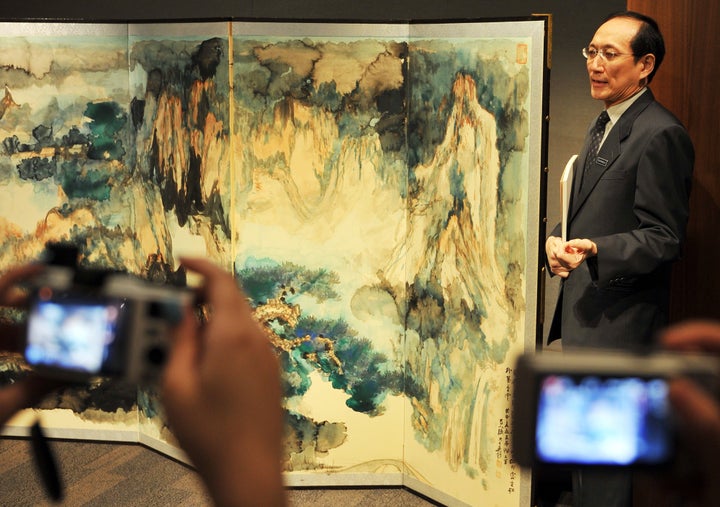
HONG KONG - The vibrancy of contemporary China's art world is on full display at this week's Hong Kong International Art Fair. Barely a generation ago, amateur collectors braving the shabby studios of starving artists in Beijing and Shanghai were buying art for a few hundred dollars apiece.
Today, the world converges in a Hong Kong well on its way to becoming a leading hub of the global art market, driven in large part by the art being created in China and the buying power of the country's rising wealth.
Prices of contemporary Chinese art continue to reach commanding heights. It is a phenomenon many liberal political commentators rather ignore. It does not fit their narrative. The story they prefer to tell goes as follows: Artistic freedom is the prerequisite of creating great art; China's authoritarian politics places severe limits on artistic freedom; such lack of freedom makes it impossible for China to attain real cultural achievements -- the much craved "soft power."
Well, the market says otherwise. As things slow down in Basel and Miami, leading galleries, dealers, collectors and artists who congregate here are setting the art world of the People's Republic abuzz. It seems to be only an interim culmination of a 20-year trend that shows no sign of slowing.
It turns out that the liberal narrative is based not on facts but on ideology. In the long history of man's endeavor to create art, the so-called artistic freedom is a very recent anomaly. Michelangelo worked for the Pope. The Chinese literati painters were Mandarins serving the imperial court. Mozart composed at the pleasure of a rather overbearing Holy Roman Emperor, as brilliantly depicted in the 1984 film Amadeus -- "Too many notes, Mozart!"
In fact, if one takes a stroll in the corridors of the world's premier cultural institutions such as the New York Metropolitan Museum and the Louvre, the vast majority of art works being admired were created with no artistic freedom at all. In every culture and every civilization, most great art was produced under, or at the service of, political and/or religious authorities. Enduring artistic achievements were realized even under the harshest forms of dictatorial rule. The pyramids were built for the Pharaohs and Shostakovich composed, with real discomfort, beautiful music under Stalin.
The contemporary art scene in China is a mixed one. The state is both a patron and a censor of art. Large investments have been made by the government to promote artistic activities. The recent partnership between the government-run Shanghai Art Museum and New York's Asia Society for the exhibit of the late Wu Guanzhong's work is a case in point. Many of the artists whose million-dollar works are on exhibit at the art fair are graduates from art institutes that have been receiving dramatically increased government funding in recent years.
In the private sector, Chinese artists, successful and aspiring ones alike, are conducting wide-ranging and far-reaching artistic experiments. Galleries and dealers, both local and leading international names, are building a vast commercial empire on their works. Curators around the world work in China and find it to be a most fertile soil for ground breaking artistic interpretations. Yet, they all work within the restrictions set by a strong political authority. Exceptions exist, like Ai Weiwei, but they prove the rule.
Only history will tell whether truly great art of enduring value is being created here and now. But no one can deny that creativity of a most vibrant kind is driving a robust art ecosystem within the world's most significant authoritarian state.
Amid the hustle and bustle of the Hong Kong International Art Fair, those who have been preaching "artistic freedom" seem rather out of place. For them, it is not supposed to be like this. For any objective observer, it is not unique at all. Human civilization has been blessed with marvelous artistic creation under all different kinds of political systems. Those who claim that only one form of political governance is conducive to the development of culture are under the spell of ideological self-delusion. It is an irony that they are the ones who seem to be politicizing art just as much as, if not more than, the authoritarian state they detest.
Are they really prepared to pronounce Damien Hirst inherently superior to Michelangelo, Lady Gaga more enduring than Mozart and subway graffiti greater cultural monuments than the pyramids? The thundering footsteps of Chinese art are leaving them far behind.
This piece was published in the South China Morning Post on May 22, 2012.